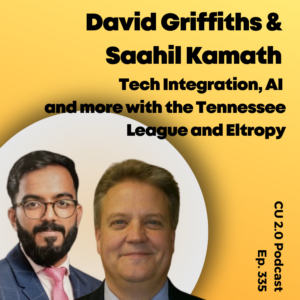This is an excerpt from FinAncIal: Helping Financial Executives Prepare for an Artificial World. Grab your copy here!
In the previous chapter, I showed various uses of AI in modern products and services. I hope that gives you an idea about what AI has been used for in other industries. More importantly, I hope that it shows how disruptive AI is—ridesharing, content streaming, and online shopping used to be taxis, Blockbuster, and brick‑and‑mortar retailers. Today, those services are industry standards, and their former competitors are afterthoughts.
There are a few areas in banking and finance that look like low‑hanging fruit for AI projects. These will be among the first aspects of the industry to change. And, as they change, so will the industry. In less than ten years, we should expect disruptive new technologies to become standard, and for older approaches to be afterthoughts.
The specific applications in our industry that appear poised for an AI revolution are broad. Fortunately, they will fit mostly into two general categories: analysis and customer interaction. Both offer entirely different use cases with their own problems and impacts to our organizations.
Banking AI for Analytics
Some of the analysis issues include the following:
- Asset liability management
- Fraud detection
- Anti‑money laundering
- Check kiting
- OFAC checking
- Structure finance analysis
- Portfolio analysis
- Customer or member profitability
- Funds transfer pricing
- Core deposits
- Current expected credit loss (CECL)
Analysis is the lifeblood of managing tight‑margin businesses, compliance, fraud detection, and risk. And there are countless applications for it in our industry. Plus, everything needing analysis requires data, where machine learning truly shines.
ANI and machine learning have the capabilities to take existing data, define a problem set, and make meaningful, accurate inroads toward your specific goals. Then, over time—often in as little as a few months or a year—the machine learning models will get smarter and more accurate. Instead of setting assumptions and weighing risks, the AI models increase in precision.
For financial institutions that don’t have the in‑house resources to tackle these concerns, they may consider looking to third parties. Many vendors normalize and anonymize data to provide a rich start to organizations working with AI. They also share scenarios, analytics, and lessons to help smaller institutions better leverage their existing data. Furthermore, instead of dealing only with recent data, ANI will provide the tools for entering, digesting, and parsing large volumes of historical data. Credit unions and banks who can draw from multiple models may be able to process data faster, thereby detecting trends earlier. With faster data processing and key early insights, these financial institutions stand to gain advantages in pricing, profitability, and growth.
Other Analytical AI Considerations
Other critical areas in which sophisticated data analysis will effect significant changes are already well under way. Models developed for service, attrition, and product recommendation can reassure customers and members that they’re being heard, that they matter, and that their needs are understood.
One area where early AI has already made inroads is in attrition models. Attrition models track consumer habits across multiple pathways. Changes in card usage, branch visits, web browser searches, and so on can provide major insights to consumer behavior. Tracking such information and scoring actions (or lack of actions) can help financial institutions see which specific individuals might leave. Spotting early indicators and quantifying members attrition risk allows AI attrition models to accurately predict departing customers with nine times the accuracy of other leading methods. We all lead highly complex lives, so leveraging artificial intelligence to help us read the tea leaves will be essential.
How do these prognostications work? It’s simple. Web interactions, email clicks, financial transactions, and buying patterns can indicate all sorts of service needs and issues. With enough data, these can be accurately tied to life stages and events, such as marriage or divorce, pregnancy or adoption, and so on. For example, if you see that a customer is looking at maternity clothes, then tailored AI models can assess whether the family could benefit from various products or services, such as a car loan to accommodate the expanding family or a home improvement loan to prepare the baby’s room.
This kind of “next best product” data can reach far beyond mere structured financial data. One issue for machine learning, especially with structured data, is how unpredictable humans can be. Often, we make the mistake of thinking that consumer behavior is logical. However, when humans are deciding what to buy or which services to try, they rely on hard‑to‑quantify things like personal experience, strange memories, and of course, emotions.
Imagine incorporating data from social media like Facebook or LinkedIn, car performance and usage, job performance, as well as broader community trends. The ability to leverage increasingly wider pools of data could have a tremendous impact on our ability to make strong predictions and recommendations.
Analytics AI Questions and Concerns
On the other hand, that kind of far‑reaching data mining brings up several high‑order concerns. What do these practices say about privacy in the modern and future world? What implications does this have on advertising? On ethics? How far is too far, and how far is just far enough to be convenient without being creepy?
We’re already close to that point. One example of this is our ability to connect the dots between markets. Data from both the merchant and consumer sides of a credit transaction enables algorithms to apply what they know about one party to inform what they know about the other, and vice versa. Is it too much to suggest a home improvement loan for the baby on board when the couple’s friends and family may not yet know? Do people want their financial institutions to know so much about their personal lives, and would they appreciate the marketing efforts that follow?
Not all low‑hanging fruit has to do with analysis, though. The other broad category ripe for improvement is in customer interaction.
Banking AI for Customer Interaction
Customer interaction is also a big topic. It covers just about any customer‑facing concern that can be addressed, modified, or created by AI.
Much of what customer interaction AI accomplishes reduces employee workloads. A little of it makes things more convenient for consumers as well. Some of the issues that can be augmented by customer interaction AI include the following:
- Customer service
- Call centers
- Loan applications
- Mobile banking
- Financial counseling
- Investing, budgeting, and saving
Once again, this is just a quick list. There’s nothing exhaustive about it. An exhaustive list of how AI could ease consumer interactions would have to be constantly updated and it would stretch the limits of my imagination.
At this point, we barely even realize that some of the interactions that we have as customers have AI’s fingerprints all over them. When we chat with assistants while browsing for new cars online, we’re actually speaking with AI. Many loan underwriting processes let machine learning help us. When we ask Siri or Cortana for directions to the nearest branch, AI clarifies our needs and helps us navigate.
There are and probably always will be people who prefer face‑to‑face, human‑to‑human interactions. Still, there aren’t many people in the world who wouldn’t trust an ATM for a routine deposit or withdrawal at this point. In a few years, will anyone think twice about interacting with an intuitive, voice‑controlled interface for customer service issues?
One of the primary benefits of bringing AI into consumer‑facing areas of business is its cost‑effectiveness. Whereas the analytical properties of AI focus on increasing efficiencies and delivering more accurate results, its customer interaction properties often focus on reducing tedious manual workloads for employees. If NLP chatbots can address a wide enough array of common problems, then call centers will receive fewer calls. Accordingly, there will be less need for full‑time call center staff, and those employees will have more room to pursue higher‑order concerns that can improve operations.
Some customer interaction use cases fulfill multiple needs, too. Aside from reducing call center demands by answering frequently asked questions and offering additional resources, AI chatbots can generate leads by acquiring visitor information and triggering automated workflows based thereon.
Combining Analytical and Customer Interaction AI
Although I grouped the uses for early AI into two groups, the reality is that they aren’t completely different. Customer interaction AI can inform and provide data for analytical AI. In return, analytical AI can drive the services made popular through customer interaction AI. They’re not exactly different—at least, not any more than two sides of the same coin are different.
Banks and credit unions have tons of structured data—more than just about any other industry—which means they have huge potential to be both disrupted and improved by AI. That amount of data makes a lot of formerly impossible things possible.
A few themes will pop up throughout the next portion of this book. The main question that I will answer is this:
What problems can AI solve for banks and credit unions?
The short answer is, “plenty.” The long answer is that in the past year, every single fintech I have talked to is using AI in some capacity. Fintechs are notoriously eager adopters and developers of next‑generation technology. If they’re all heading in that direction, that serves as a very strong indicator that AI will be the future of banking.
- Financial institutions that navigate this transition will increase efficiency while delivering significant improvements in service. AI can’t solve everything, but it will solve and improve many things. Here are some easy examples:
- Missing payments (automatic bill pay)
- Waiting on hold in call centers
- Authenticating users
- Reducing fraud
- Reducing false negatives in payments
- Making faster loan decisions
- Quality control and validation
- Asset/liability scenarios
- Hyper personalization
- Moving money faster
The opportunities for consumer‑facing AI are massive, and they aren’t limited to chatbots. Most people use apps and software without knowing much about the technology behind them.
While I can’t show how these services and apps operate on an engineering level, I can give a high‑level overview of some new products out there. See, a good deal of commonly used services in the financial industry rely on AI technology, but they’re flying a little under the radar. In the next several chapters, I’ll introduce a handful (okay, a few handfuls) of case studies and examples featuring these technologies or approaches in the financial industry.
Read Sample Case Studies for AI in Banking Here
To read all of the case studies in the book—and see how your institution can get started with AI—pick up the book here.
The following case studies are pulled mostly unmodified from the book. They were first written more than a year ago now, and all organizations featured below may have seen further improvements in efficiency and efficacy.




